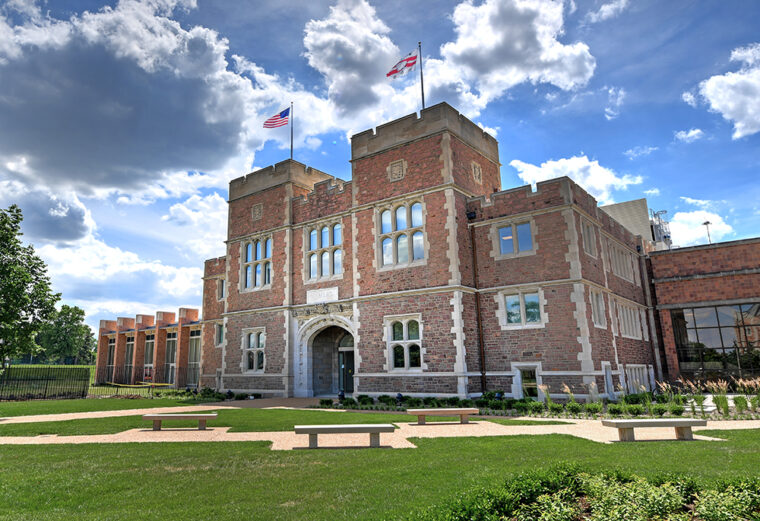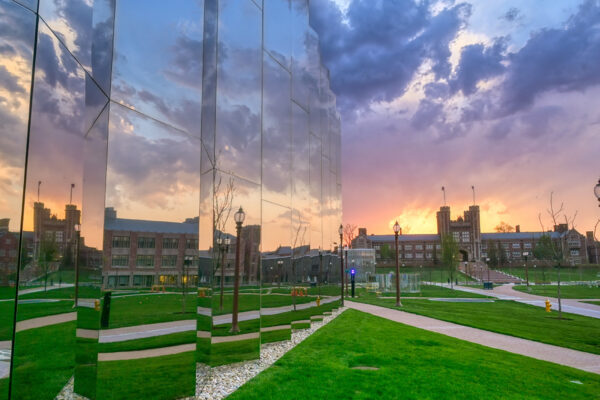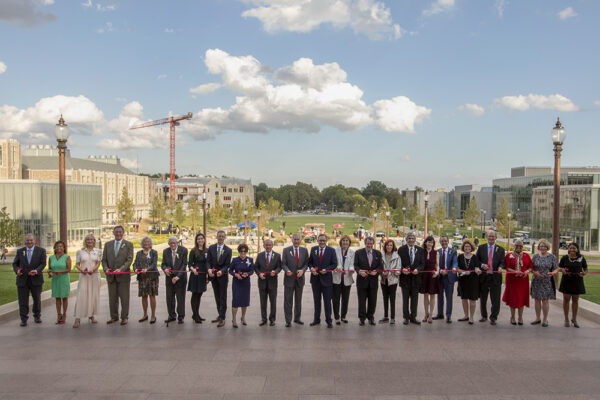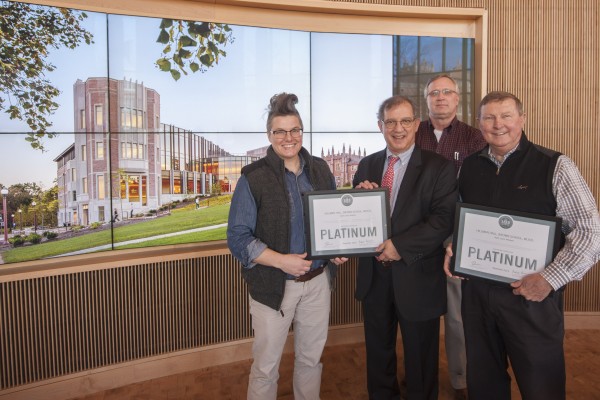The U.S. Green Building Council recently awarded Sumers Recreation Center its highest certification: LEED (Leadership in Energy and Environmental Design) Platinum. Sustainability was baked into the building from its very beginning, and the certification demonstrates the level of commitment Washington University in St. Louis has when it comes to designing buildings to reduce carbon emissions, conserve water, support the health of inhabitants, responsibly source materials and more.
“Here at Washington University, we are abundantly aware of the environment’s impact on human health and wellness. To that end, we have made a strong commitment to meet or exceed LEED Silver through our building projects,” Chancellor Andrew D. Martin said. “We’re proud that the Sumers Recreation Center, a building designed to enhance human health, has achieved the highest level of LEED certification.”
Sumers Recreation Center attained the Platinum certification by hitting industry-leading targets for design and performance. This includes a 37% reduction of water use and a 55% reduction of energy use and associated carbon emissions compared to a conventional building project, along with roofing materials that reduce the urban heat-island effect.
The project also recycled the majority of construction waste, used building products made from recycled materials — and even reused the wooden flooring from Francis Gymnasium. A solar panel array, installed on the roof of the building and partially visible from Big Bend and Forsyth boulevards, will provide 22% of the building’s electricity from a carbon-free source. All of these measures added up to the council’s top honor.
The rec center is the third Washington University building to attain the milestone; the Lofts of Washington University was certified LEED Platinum in 2014, and Hillman Hall was certified LEED Platinum in 2016. Additionally, all five new buildings in the east end project have been designed to meet or exceed LEED Gold certification. Green building design on campus is part of the university’s sustainability master plan, which also aims to lower greenhouse gas emissions to 1990 levels by 2020 via on-site energy efficiency and renewable energy.
To learn more about the university’s efforts, visit the Office of Sustainability’s webpage.



